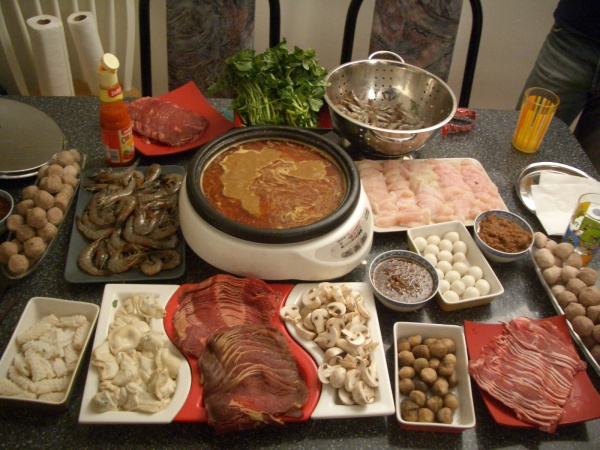Facts About Hot pot
Hot pot, also known as steamboat or soup-food, is a delightful Chinese culinary tradition that unites people around a simmering pot of broth right at the dining table. Think of it as a communal fondue with a flavorful twist. You simply add raw ingredients to the pot, let them cook, and enjoy. Whether dining at home or in a restaurant, hot pot is more than just a meal—it's an experience.
Typical hot pot ingredients include thinly sliced meats, fresh vegetables, mushrooms, vermicelli, tofu, and seafood. As these ingredients cook in the broth, they infuse it with rich flavors, making the broth a delicious treat to sip at the end of the meal. And don’t forget the dipping sauces! They add an extra layer of flavor to each bite.
Hot pot isn't just a modern dining trend; it has a long history dating back to the Zhou Dynasty in China. It gained particular popularity among emperors during the Qing Dynasty and remains a beloved dish in Chinese culture. One reason for its enduring appeal is the way it fosters camaraderie, making it especially popular during the colder months when a warm, hearty meal is most appreciated.
What’s fascinating is how hot pot varies across East Asia. In Mainland China, Taiwan, Japan, Cambodia, the Philippines, Thailand, and Vietnam, each region has its own take on hot pot with unique ingredients, broths, and cooking styles. For instance, Chongqing hot pot from China is famous for its spicy and numbing flavors, while Japanese hot pots like sukiyaki and shabu-shabu are celebrated for their delicate preparation and high-quality ingredients.
Hot pot has also become a significant draw in the tourism industry in many regions, leading to a boom in hot pot restaurants. When dining out, you can choose from a variety of soup bases, tailor your ingredients to your liking, create custom dipping sauces, and follow specific eating orders to get the most out of your meal.

 Russia
Russia